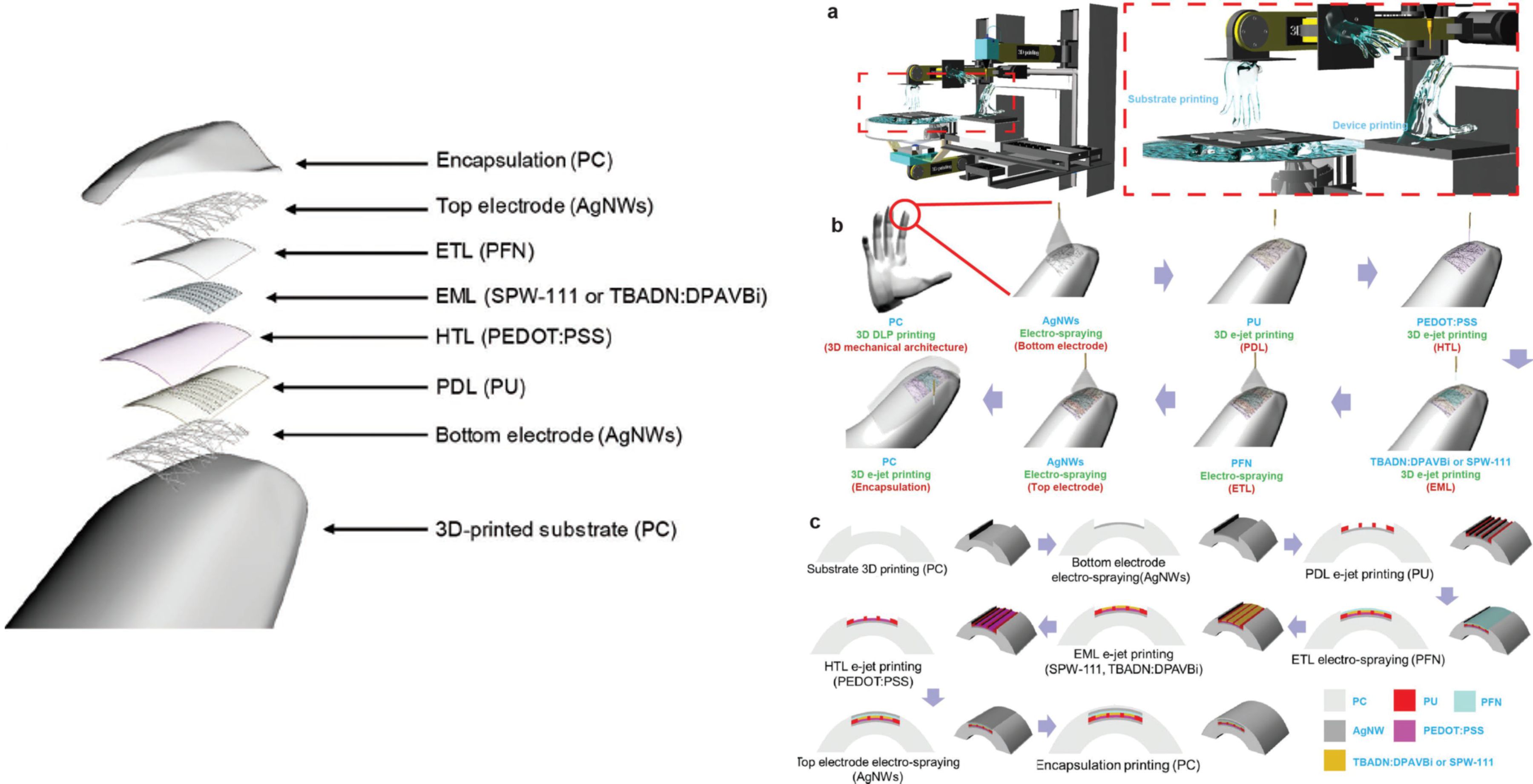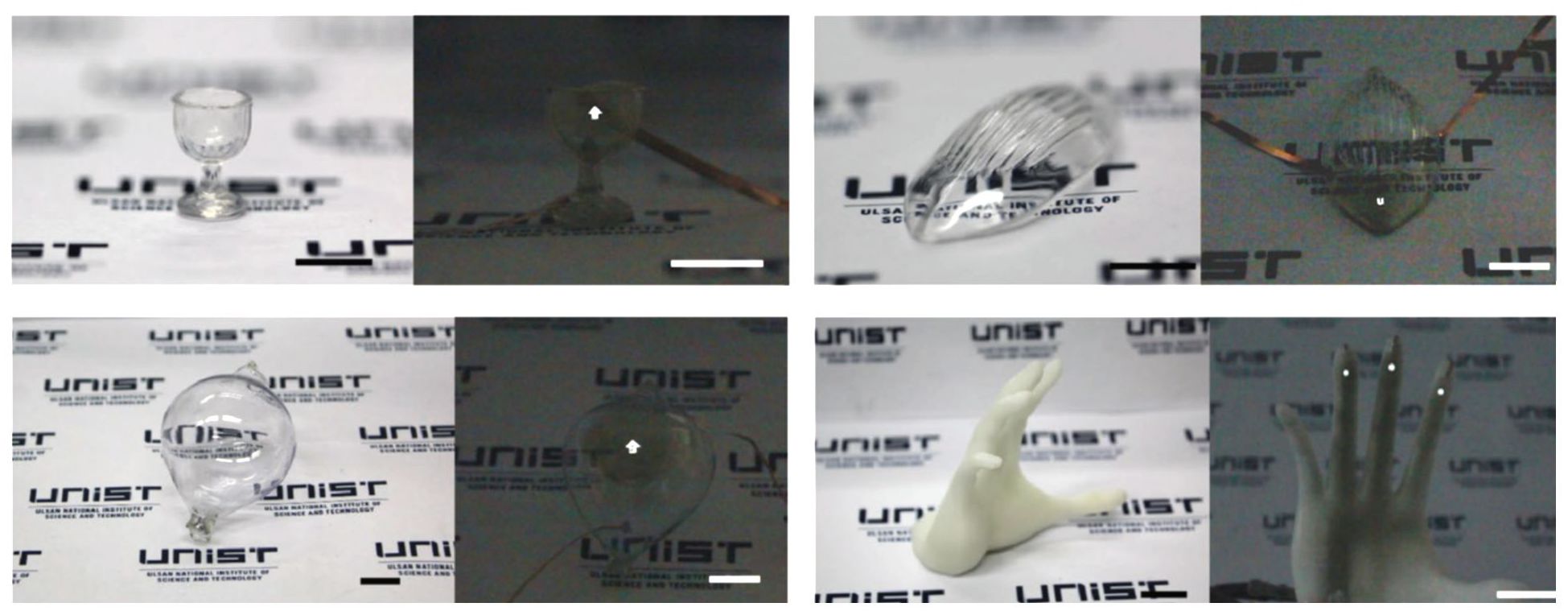A research team within the Department of Materials Science and Engineering at the Nano Science Technology Institute at Yonsei University (Seoul, Korea) is developing a 3D printing technique that enables OLEDs to be printed onto transparent structures of any shape. The result: “nearly anything can become a see-through color display.”

First, a few words of background information. Previous approaches to the production of freeform, transparent displays utilizing conventional technologies are reported as suffering from high fabrication cost and unnecessary waste of materials. In addition, since conventional approaches typically involve the use of photolithography, it is only possible to fabricate 2D structures on a flat surface.
One alternative technology that can overcome the limitations of conventional approaches is based on direct 3D printing. However, up till now, such approaches have experienced problems of their own including limitations on the inks that can be printed and the resolution of the printing.
To address these and other difficulties, the Yonsei research team is developing an approach that is reported in a recent article entitled “High?Resolution 3D Printing of Freeform, Transparent Displays in Ambient Air.” It was published in the open access Advanced Science journal on October 4th and can be found here.
The approach adopted by the team is described as based on the use of a special 3D printing system to print both the 3D support structure and the 3D display electronics. More specifically, the hybrid 3D printing system includes a Digital Light Processor (DLP) and is used to print a transparent plastic “frame.” Next, a five-axis electrohydrodynamic jet (e-jet) printer builds up an OLED display within the frame. The configuration of the device as well as the equipment and processes used to fabricate devices are illustrated in the figure below.
 Left: the configuration of a device. Right top: Schematic illustration of the hybrid 3D, multi-stage DLP/e-jet printing system. Right bottom: Schematic illustration of the fabrication process.
Left: the configuration of a device. Right top: Schematic illustration of the hybrid 3D, multi-stage DLP/e-jet printing system. Right bottom: Schematic illustration of the fabrication process.
Note that the processing steps used by the hybrid 3D printing system does not need additional thermal drying or annealing steps. This, in turn, allows for the direct formation of 3D devices at ambient temperature.
Other features of the approach include the facts that
“the 3D e?jet can print diverse functional materials for optoelectronic devices with high resolutions (minimum linewidth: 2.6 µm). This is possible even on 3D architectures with diverse geometries by adjusting the printing speed and position within a synchronized, five?axis stage movement.”
The team fabricated and measured the properties of prototype e?jet printed OLEDs. The prototypes were found to have electro-optic properties comparable to those reported of conventionally produced OLEDs.
Several of the transparent, freeform prototype devices that were produced in this study are illustrated in the figure below:
 Photographs of the 3D printed transparent OLEDs in turn off (left) and turn on (right) condition on various objects.
Photographs of the 3D printed transparent OLEDs in turn off (left) and turn on (right) condition on various objects.
The researchers also prototyped a set of AR glasses with printed transparent OLED lenses capable of responding to wireless controls from a smartphone.
The researchers note in the conclusion of their article that the e-jet printer used in their current work had only a single print nozzle. Based on this and looking towards the future, the researchers speculate that the production speed of their method could be increased quite considerably by the use of a multi-nozzle e?jet – in much the same way speed is increased in conventional inkjet printheads.
As a final point, the team stated that the development of new 3D printable encapsulation materials with lower water and oxygen permeability have the potential to further increase OLED lifetime. -Arthur Berman
Yonsei University, Hyeon Seok An, [email protected]

